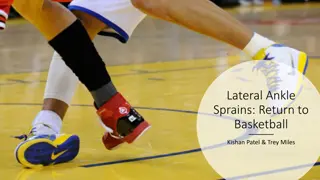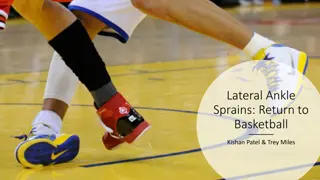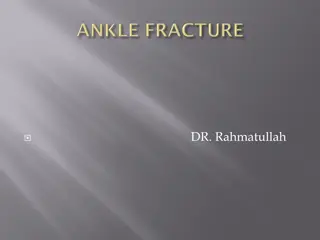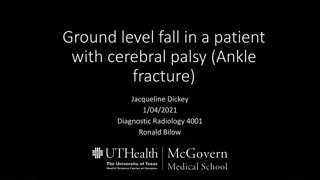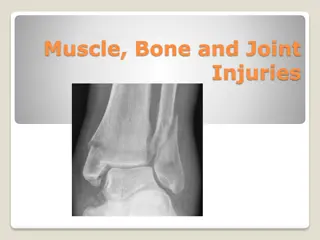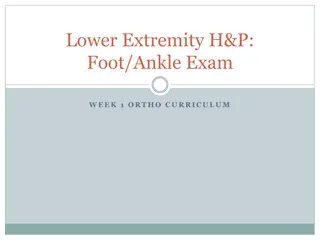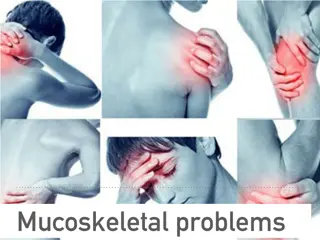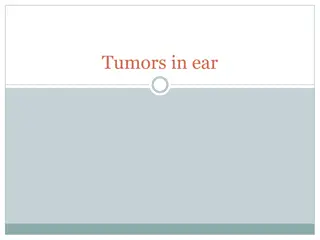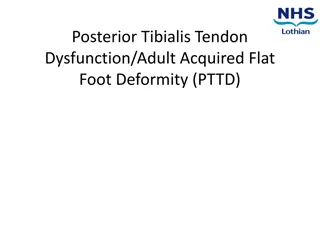Understanding Ankle Sprains: Causes, Symptoms, and Management
An ankle sprain is an injury to the ligaments supporting the ankle, commonly caused by twisting, sudden movements, or muscle weakness. Symptoms include pain, swelling, and restricted movement. Diagnosis involves a physical examination, and management can include self-care, medications, lifestyle changes, and therapy. Lifestyle and health changes can aid in recovery and prevention.
Download Presentation

Please find below an Image/Link to download the presentation.
The content on the website is provided AS IS for your information and personal use only. It may not be sold, licensed, or shared on other websites without obtaining consent from the author. Download presentation by click this link. If you encounter any issues during the download, it is possible that the publisher has removed the file from their server.
E N D
Presentation Transcript
Contents 1. What is an ankle sprain? 2. What are the causes? 3. What are the symptoms? 4. How is it diagnosed? 5. What is the management? 6. How can I manage it?
What is an ankle sprain? Ankle sprain is characterised by an injury to at least one of the ligaments supporting your ankle.
What are the causes What are the causes? Excessively twisting of the foot/ankle causing it to roll over. Specific activities involving quick, sudden change of direction or jumping e.g. Basketball & dancing. Muscle weakness. Foot shape and/or mechanics. Poor proprioception and balance. High body mass index.
What are the symptoms? Pain over the ankle joint (usually around the outer aspect of the ankle). Pain when bearing weight. Swelling and stiffness. Restricted movement of ankle.
How is it diagnosed? An appropriate healthcare professional will discuss your symptoms and enquire about your general health. A physical examination of your foot and ankle will be carried out to assess your movement, response to particular tests and level of pain. This conditions is diagnosed by clinical examination. In some cases, further diagnostic imaging may be required.
What is the management? Many patients are happy to self-manage their symptoms, with painkillers/anti-inflammatory medication or other non-invasive treatments such as: Lifestyle and health changes Activity Modification Cold compress Rest and immobilisation, as required Self directed exercises Physiotherapy and/or Podiatry
Lifestyle & Health Changes Maintaining a healthy diet and weight Getting regular physical activity as per guidelines Getting 7-9 hours of quality sleep per night Reducing alcohol intake Quit smoking Not all of these recommendations will be relevant to everyone, but these are important factors to consider to optimise your outcome. Click this link for more information and support options
How can I manage it? Application of ice to control the pain/discomfort. Self directed exercises Rest/immobilisation/activity modification, as required Simple pain relief or anti- inflammatory medication - Consult your GP or Pharmacist Image result for pain relief
Physiotherapy Physiotherapy/Podiatry Through a thorough examination, a Podiatrist or Physiotherapist can: Help you establish what may be causing your pain Provide you with an individualised treatment plan to help and/or resolve symptoms. This may include: -Specific exercises to improve strength and balance. -Taping/strapping. -Advice on footwear. -Foot orthoses/insoles or ankle braces. Advise and arrange further investigation, if required.
More Invasive Management Options In some cases symptoms may persist and more invasive treatments may be required/requested by you, as the patient: Surgery
Surgery Surgery is only required if pain is present and symptoms are unable to be controlled by more conservative methods, as described above.



